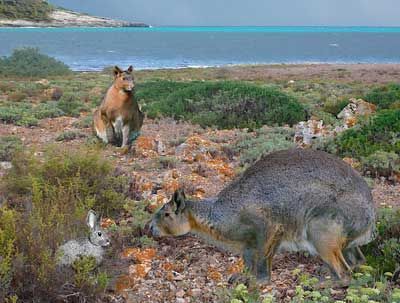And maybe giving Uncle Wiggily a second thought, too.
The giant rabbit - technically termed Nuralagus rex - apparently lived between 3 million and 5 million years ago on the island of Micorca in the Mediterranean Sea. Fossils indicate the creatures had brittle backbones that made it impossible for them to hop, and likely weighed more than 25 pounds.
"N. rex was a very robust and peculiar rabbit," project leader Josep Quintana told Discovery News. "Surely he was a very calm and peaceful animal that moved with slow, but powerful, movements."
The rabbit was isolated on the island with just a few other species, including a type of bat, a dormouse and a giant tortoise. Because it didn't have any enemies, the rabbits' eye sockets and ears reduced over time.
From Discovery News:
The changes, especially the increase in body size, add to the growing evidence for what's known as "the island rule." Simply put, this states that when on islands, big animals often tend to become smaller and small animals frequently tend to grow larger...
"It is as if nature experimented with form and function, not without a wicked sense of humor," Lucja Fostowicz-Frelik, an American Museum of Natural History paleontologist, told Discovery News.
Fostowicz-Frelik continued that the newly found rabbit "is just another manifestation of the island rule ... We know that their closest relations, rodents, did produce some gigantic forms, not necessarily on islands, which averaged several hundred kilos. Now we see that the lagomorphs (the animal order that includes rabbits, hares and pikas) did not escape the trend."




....and was propably eaten by some predator that finally made it to that isolated island.